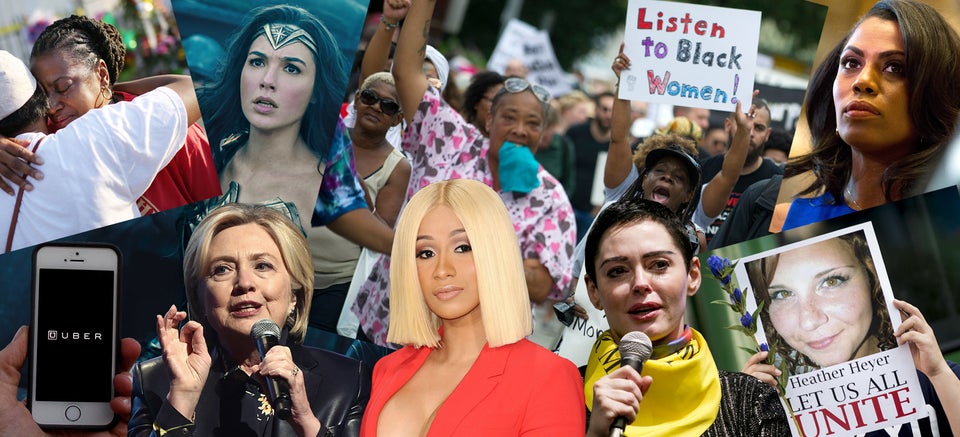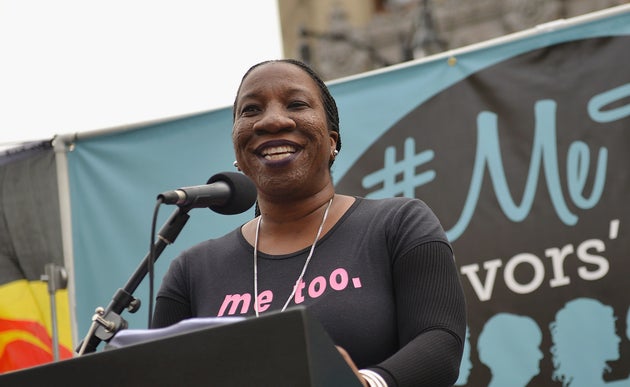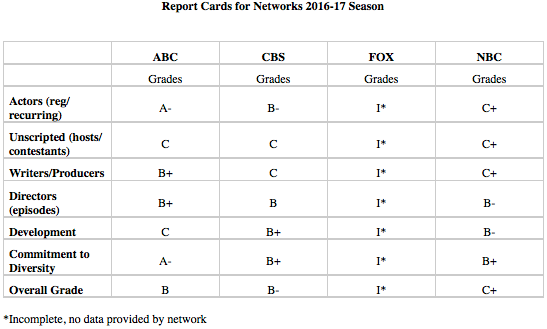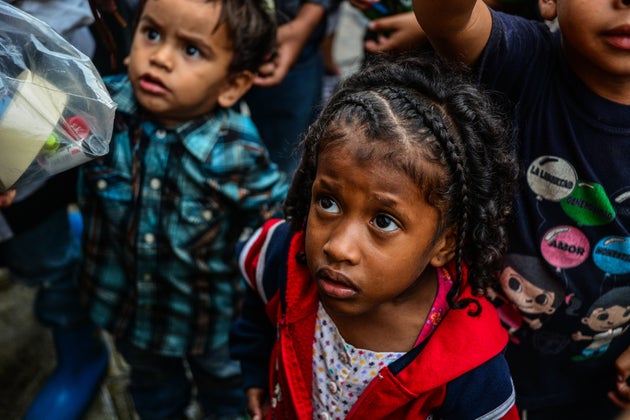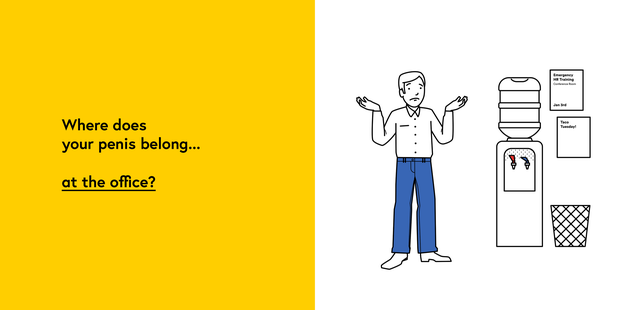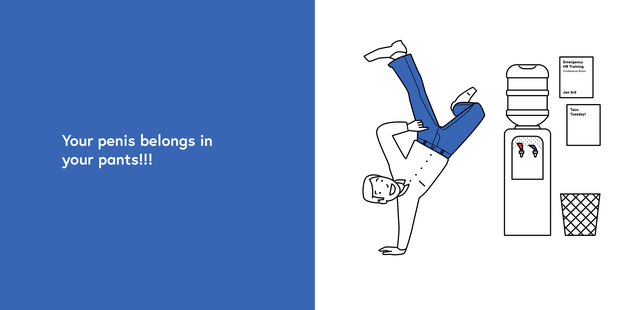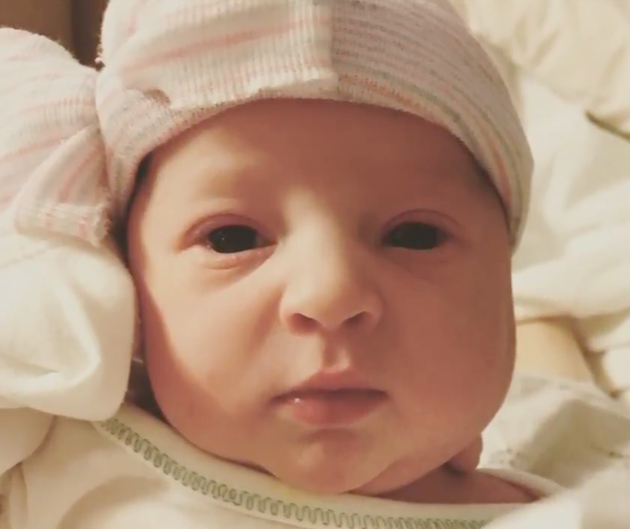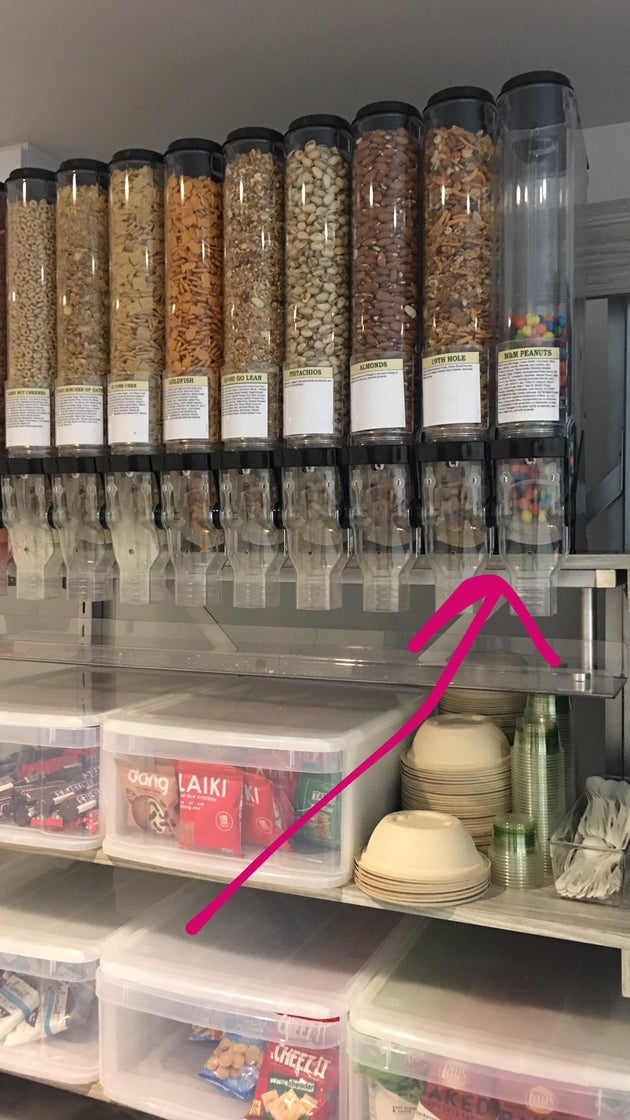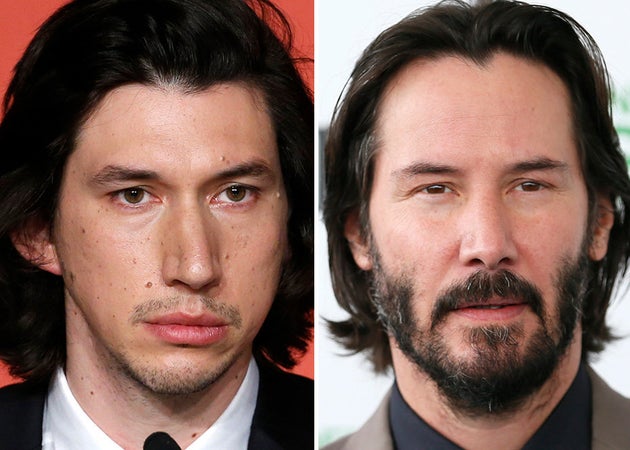There were times in 2017 when it felt like rage might burn me up from the inside out. At times, that anger felt paralyzing. When there is so much happening at once, how do you focus your energies?
During these moments, it was always reading that jolted me and my colleagues into action ― a piece about the Women’s March that made us get off our couches and show up, or a piece on a raucous summer blockbuster that made us remember that joy can be a radical act. So for thesixth time we’ve curated a list of pieces that had an effect on us as readers over the last calendar year.
To make the list, an article had to be (1) published in 2017, (2) written by a woman and (3) available online. Below are 28 of those pieces that moved us this year. They are a reminder that even in the darkest of times, storytelling matters.
Rebecca Traister, New York Magazine
In this extended moment of reckoning regarding sexual assault and harassment, we are all implicated, Rebecca Traister argues. Because when you’ve spent a lifetime both experiencing violations and being complicit in a system that allows them, the process of a collective reckoning is a difficult one. It brings painful self-reflection, anxiety over a brewing backlash (“A powerful white man losing a job is a death, and don’t be surprised if women wind up punished for the spate of killings”), and, potentially, the promise of catharsis and eventual equality. Some women, Traister points out, might realize they’ve waited their whole lives to tell stories they didn’t even know they carried.
Ijeoma Oluo, The Stranger
Ijeoma Oluo wanted to avoid Rachel Dolezal, the white woman who passed herself off as a black woman for a decade. But when that became impossible, she interviewed her instead. What followed is a striking piece of journalism, an interview that really digs into the core of what drives the relationship Dolezal has with blackness. As Oluo writes, “I couldn’t escape Rachel Dolezal because I can’t escape white supremacy. And it is white supremacy that told an unhappy and outcast white woman that black identity was hers for the taking.”
Lindy West, The New York Times
This piece has one of the best headlines of the year. And it only gets better from there. As Lindy West outlined in the wake of the first round of Harvey Weinstein allegations, “The witches are coming, but not for your life. We’re coming for your legacy.” As 2017 comes to a close, the hunt continues.
Rachel Kaadzi Ghansah, GQ
Rachel Kaadzi Ghansah’s stunning longread on Dylann Roof, the now 23-year-old man who murdered nine black parishioners at Mother Emanuel AME Church in Charleston, South Carolina, in 2015, attempts to answer a big question: How did “one of the coldest killers of our time” come to be? Ghansah spoke to Roof’s teachers, classmates, friends and family members, concluding that Roof is a terrifying omen. He is “a child both of the white-supremacist Zeitgeist of the Internet and of his larger environment [...] It is possible that Dylann Roof is not an outlier at all, then, but rather emblematic of an approaching storm.”
Jenn Gann, The Cut
For Jenn Gann, fighting for justice for her beloved son who was born with cystic fibrosis means considering that he should never have been born. Gann’s exploration of “wrongful birth” cases ― in which the parents of a child with a congenital disease claim that medical professionals failed to properly warn them of their child’s condition before birth ― is deeply personal, raw and heart-wrenching. This story complicates the narrative people usually consider when discussing terms like “pro-life” and “pro-choice.” “After all this pain and humiliation and anger boiled down to records and money and who did what,” Gann writes, “the love I have for my son feels like the one thing that can’t be taken from me.”
Ashley Nkadi, The Root
The headline says it all. “There will come a day when the same nation that stepped on black women will run, shouting, at our doors to save it,” Ashley Nkadi writes. “And we will whisper ‘no.’”
Jodi Kantor and Megan Twohey, The New York Times
This is the piece of journalism that set off a reckoning. Jodi Kantor and Megan Twohey spent months reporting out this story about the years of sexual harassment and assault allegations against Harvey Weinstein. We will be sorting through the consequences of this stellar piece of journalism for years to come.
Rebecca Traister, New York Magazine
There is so much to say about Hillary Clinton, the equal-parts-beloved-and-reviled woman who almost became president. Rebecca Traister draws a portrait of a candid, exhausted, powerful, funny, worried, determined and (understandably) angry woman, recovering from a grueling presidential campaign and looking toward an uncertain future for the nation she spent her life working for.
Maris Kreizman, The New York Times
In a moment when we often get our news, our life updates, our job opportunities and our dates via algorithm, sometimes it’s healthy ― and downright heartening ― to remember that “the best things in life are unquantifiable.”
Jessica Bennett, The New York Times
I cried the first time I saw “Wonder Woman.” Jessica Bennett, who saw the film in Brooklyn, surrounded by girls and women of all ages, gets to the root of why viewers like me had such an intense reaction to seeing the superhero on the big screen. “There was something deeply visceral about it: a depiction of a hero we never knew we needed, a hero whose gender was everything but also nothing.”
Doreen St. Felix, MTV News
In January, Doreen St. Felix dove into the conundrum that is Omarosa’s public image, career and eventual position within the Trump administration. “She has not risen high enough to elicit any emotion besides pity,” St. Felix concluded. In December, knowing how Omarosa’s time in the White House ended, St. Felix’s assessment feels even more vital.
Gemma Hartley, Harper’s Bazaar
There’s a reason that Gemma Hartley’s piece on emotional labor struck such a chord. Not only is it a perfect mix of personal essay and reporting, but it also defines a type of work that women have been doing without acknowledgment or much public discussion for years, for decades ... for forever.
Jennifer Weiner, The New York Times
In a year that was sometimes difficult to find anything to be grateful for, Jennifer Weiner’s beautiful love note to brave women is an editorial salve for the soul.
Allison P. Davis, New York Magazine
Cardi B is a celebrity for our time: a bombastic rapper with raw talent and a powerful lack of shame about her body, her roots and her monetary success. Allison P. Davis’ profile of the artist is as fun a read as Cardi’s hit “Bodak Yellow” is a listen.
Lori Fradkin, Cosmopolitan
In the wake of the Manchester bombing, in which a bomber killed 22 people, many of them young women and girls, during an Ariana Grande concert in England, Lori Fradkin attempted to answer the question: “How do you bring children into this crazy world?” The answer she comes upon is both infuriating and simple: You just decide it’s worth it to.
Stassa Edwards, Jezebel
When an anonymously sourced “Shitty Media Men” list began circulating in October, it became ― as most things that circulate among journalists do ― a source of contention and think-piece generation. Of all those think pieces, Edwards’ is the best. “If the debate over Shitty Media Men revealed anything,” she wrote, “it’s that there is no way for a woman to level a sexual harassment or abuse allegation without having her methods and motives subjected to a detailed dissection.”
Jenna Wortham, The New York Times Magazine
The Women’s March, held the day after Donald Trump’s inauguration, became the largest single-day protest in U.S. history. It was a galvanizing moment ― one that has proved to have staying power ― and the march’s national co-chairs, Tamika Mallory, Linda Sarsour, Carmen Perez and Bob Bland, have become recognizable public figures. But the crowds on Jan. 21, though diverse in many ways, were still overwhelmingly white. In the days following the march, Jenna Wortham beautifully breaks down the cracks that exist in American sisterhood. “While black women show up for white women to advance causes that benefit entire movements, the reciprocity is rarely shown,” she wrote. “The coalitions that formed on Saturday will have bigger questions to organize around, questions that will prove more urgent in the years to come. For whom are they marching? Is it only for themselves?”
Susan J. Fowler, Her Own Blog
Months before Jodi Kantor and Megan Twohey would begin to reveal the extent of Harvey Weinstein’s monstrous treatment of women, Susan J. Fowler drew the world’s attention to Uber’s treatment of women. It’s no coincidence that Time recognized her as one of 2017’s “silence breakers.”
Jia Tolentino, The New Yorker
There was a time when it felt like you couldn’t frequent a women-centric digital publication without coming across a personal essay. From Jezebel to xoJane to HuffPost Women to The Cut, personal stories reigned supreme ― told with varying degrees of self-awareness, skill, editing and relevance. Jia Tolentino bids the era of the personal essay adieu with conflicted feelings: There is no mourning for this genre, but perhaps there is room to appreciate a type of writing that allowed people to “try to figure out if they had something to say.”
Chloe Angyal, HuffPost
When Heather Heyer was killed in Charlottesville, Virginia, she died an anti-racist activist and feminist. She also died as a woman who asserted her opinions in public spaces, had never been married and didn’t have children. As Chloe Angyal explains, it was being single and childless that made her the perfect symbol of everything the alt-right disdains.
Stephanie Zacharek, Eliana Dockterman and Haley Sweetland Edwards, Time Magazine
In 2016, Donald Trump was Time’s Person of the Year. In 2017, his looming presence was replaced by a sea of women who dared to speak up and set off a reckoning. It was poetic justice in a magazine cover.
Elizabeth Weil with annotations by Hannah W. Duane, The California Sunday Magazine
We so often hear about teenagers in the abstract ― what they’re buying, what they’re ruining, what they’re like, all told by adults who can hardly remember what it was like to be teens. (At the ripe old age of 30, I feel not so distant from my teenage years, and yet recalling the experience of being 13 or 15 or 17 with authenticity feels like a herculean task.) Weil and her teenage daughter, Duane, manage to put the duel perspectives of parenting a teen and being a teen into one beautiful piece. Weil wrote an essay, and Duane added notes and corrections. The result is simply brilliant.
Amber Tamblyn, The New York Times
When Amber Tamblyn tweeted about a time James Woods tried to pick her up when she was 16 years old, the older actor called her a liar. This public denial set off something inside of Tamblyn. She fired back in The New York Times with a clear message: No more. No more silence because the silence has become stifling and its costs too high. As Tamblyn wrote: “The women I know, myself included, are done [...] playing the credentials game. We are learning that the more we open our mouths, the more we become a choir.”
Alexandra Petri, The Washington Post
Alexandra Petri is fed up with discussing sexual harassment as though it is an inevitability. “Nothing about this was inevitable,” she writes, addressing men. “This was not weather. You are not the weather, and your buddy is not the weather.” Amen, amen, amen.
Megan Garber, The Atlantic
Women have spent decades burying, apologizing for and papering a forced smile over their rage. In 2017, the dam holding back that rage burst. As Megan Garber articulated: “It’s a truth that the witch-burners and the shrill-shamers over the centuries have known all too well: Rage will, inevitably, rise. It’s happening now.”
Zeba Blay, HuffPost
“Girls Trip,” the riotous summer movie that brought in more than $130 million at the box office, became the first black-led film to do so. Not only was it a complete fucking delight to watch, but the movie put black women and black women’s sexuality front and center ― and celebrated it. As Zeba Blay puts it, “Girls Trip” reminds Hollywood that black women “can win at the box office with dramas and Civil Rights period pieces, but we can also win with raucous comedies that have absolutely no chill.”
Shannon Keating, BuzzFeed
When Shannon Keating was a self-described “surly teen” facing the darkness teens so often face, Brand New’s music was her medicine. This year, the sexual misconduct allegations against Brand New frontman Jesse Lacey forced Keating to reexamine the band that got her through so much. “Even though we certainly know better by now, we’d hoped that men who could make us feel so much — who got us through the darkest times in our lives when nothing else could — might be the good guys,” Keating writes. “So much for that.”
Leah Finnegan, The Outline
“If there’s one thing to learn from the endless morass of emotions that has been the past few weeks it’s that it’s good to make men feel fear,” Leah Finnegan concludes, examining the “Weinstein Effect.” Women have an intimate relationship with fear, practically from birth. We make decisions around it and silence ourselves because of it. Finnegan makes an effective argument for letting men feel a bit of what we’ve always felt. Is this what the rocky, windy road to equality looks like?









